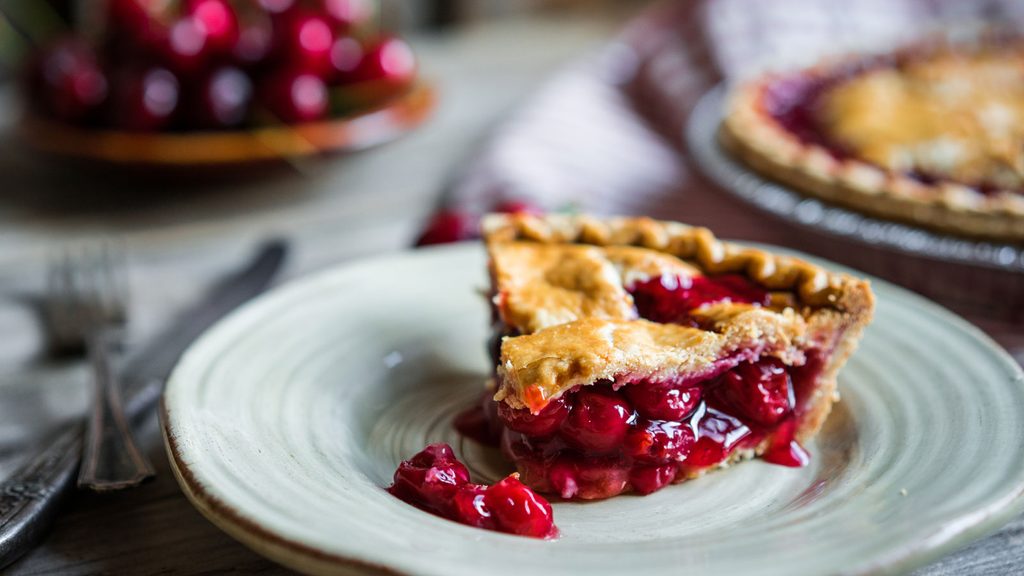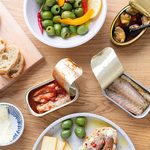Baking a Gluten-Free Pie or Tart? Here’s What You Need to Know, Depending on Your Skill Level

A flaky, buttery pie crust is possible for the gluten-free crowd! Our baking tips will help you turn any pie into a gluten-free delight.
Need to avoid gluten? (Learn if going gluten-free is the best choice for you.) There’s no reason why you should have to miss out on the deliciousness of homemade pie.
But we’ll be honest: Pie crust is a little fussy to make (even with traditional crust). So whether you’re looking to make your own crust from scratch or game for a project, we’ve got you covered.
Below, our gluten-free baking tips, based on your skill level.
Skill Level: Easy
1. Use a store-bought pie shell
Many grocery stores stock gluten-free pie crusts that are already shaped and ready to fill, which you can usually find in the freezer aisle. These couldn’t be easier to use. Simply prepare your filling according to the recipe instructions and make to check the pie crust label for any recommended baking temperature and times.
2. Make an easy gluten-free crumb crust
Some pies always have crumb crusts; think pumpkin pie and cheesecakes. But any pie can have a crumb crust—there are no rules! Crumb crusts are typically made with graham crackers and some sugar whizzed up in the food processor. Add some nuts if you want the added flavour; many fruits taste great with almonds, walnuts, or pecans.
3. Try a nut-based crust
You can make a simple pie crust entirely from nuts. Simply grind about two cups of nuts, a pinch of salt and a spoonful of sugar in a blender or food processor (careful not to over-blend, or the nuts will turn into butter!) Mix in six tablespoons of melted butter. Press into a pie pan and bake as usual.
4. Look for pie alternatives
Crisps, crumbles and buckles have the same bubbly, fruit-forward filling, minus the stress of the crust. Typically, these desserts are topped with a sweet, crunchy concoction made from sugar, butter, and some flour or oats. Simply use an all-purpose gluten-free flour blend, gluten-free oats, or even ground nuts instead of flour. These recipes are hugely forgiving, so it’s hard to mess up.
Skill Level: Moderate
Sub in an all-purpose gluten-free flour blend
You can make most pie crust recipes gluten-free simply by using gluten-free flour instead. Make sure to use an all-purpose flour blend, which is a professionally tested combination of various flours meant to have a similar balance of protein and starch as wheat flour. Many blends contain a binder, like xantham gum or psyllium husk; if yours does not, you should add about a teaspoon to your recipe. Whisk into the flour along with the salt and sugar, and then follow the recipe as normal.
A few quick pointers:
- Did you make gluten pie with that rolling pin or wooden spoon? Drop it! Wood is porous, so it’s impossible to be certain that it’s completely clear of all flour. Use silicone baking tools, or have a dedicated gluten-free spoon and pin.
- Your crust may be drier or more prone to cracking than a traditional crust, especially if you refrigerate it. Add water sparingly.
- Roll your dough out between sheets of plastic wrap for an easy, no-stick experience.
- Some gluten-free crusts may brown quickly; cover the pie with aluminum foil for the last half of the bake to prevent burning.
Skill Level: Advanced
Create your own gluten-free flour blend and make pie crust from scratch
This option is similar to making a crust with an all-purpose blend, except you can choose your own flours. If you love buckwheat or oat flour, for example, you can control the flavour and texture of the final result.
Some caveats:
- Avoid using nut flours like almond in your pie crust mix, as their high-fat content can make the crust oily. (FYI: These are the best high-fat foods to add to your diet.)
- You want a balance of starches, which keep the crust tender, and whole-grain flours, which give the dough stability and structure (and flavour).
- Go for a balance of about 40 percent whole grain and 60 percent starch.
- Take notes on which flours you use and how the final bake turned out. You’ll be able to hone your recipe over time.
Next, check out 16 easy-to-incorporate superfood powders that are great for baking.




